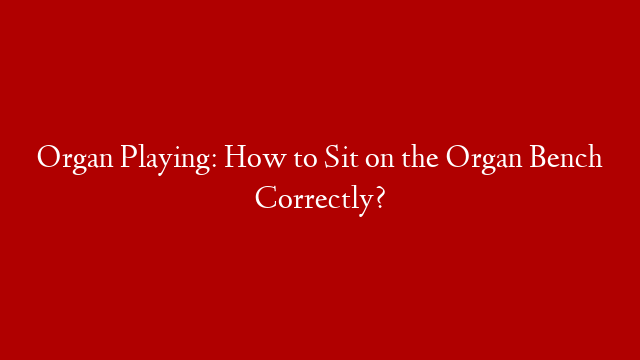Because the pipe organ is the most complex of all musical instruments, it is only natural, that the art of organ playing is very complex. It is easy for the beginner to be overwhelmed by the various details, such as articulation, registration, correct notes, rhythms, fingering and pedaling. However, very first thing an aspiring organist must do is to learn the correct manner of posture and sitting on the organ bench.
So, how do you sit on the bench? We sit in the middle of the organ bench. The height of the bench should be such that your feet should be slightly touching the pedal board. Not pressing the pedals, but hovering.
Put the bench in a position exactly in parallel with the keyboards. I have seen people position the bench in such a way that its left side is farther from the keyboards than the right side. They claim this is more comfortable because the right foot does most of the work with the swell pedal.
This is not correct. If you put the bench in this position, then when you sit, your body is positioned not straight but stretched to the left side. Over time, this type of sitting may cause problems for the body. So it is best if the organ bench is in parallel with the keyboards.
The distance of the bench from the keyboards should be such that your toes should almost be touching the sharp keys. By the way, this is very useful if you want to hit the right notes on the pedal board. If your feet touch the edges of the sharp keys, you will feel the arrangement of the sharp keys in groups of two and three.
The empty spaces between B flat and C sharp and D sharp and F sharp will show you exactly where the white keys B and C, and E and F are located. This helps in getting to know the pedal board.
When you sit on the bench, try to keep your back straight, shoulders down and relaxed, breath normally. Your arms should be positioned close to the body. However, it is not uncommon for people with some piano experience to keep their arms stretched out to the sides a little. Although this position might work on the piano, it is not really correct on the organ.
It is so because many pieces for the piano involve large leaps for both hands. Therefore, the arms may not be close to the body and they must be ready to jump. But with organ music the leaps are mostly done from manual to manual. Consequently, the elbows must be close to the body.



